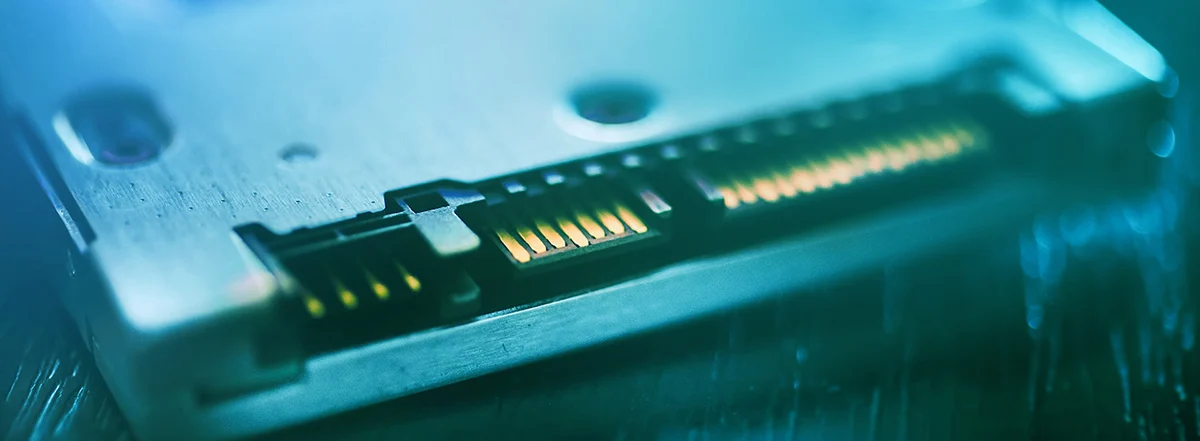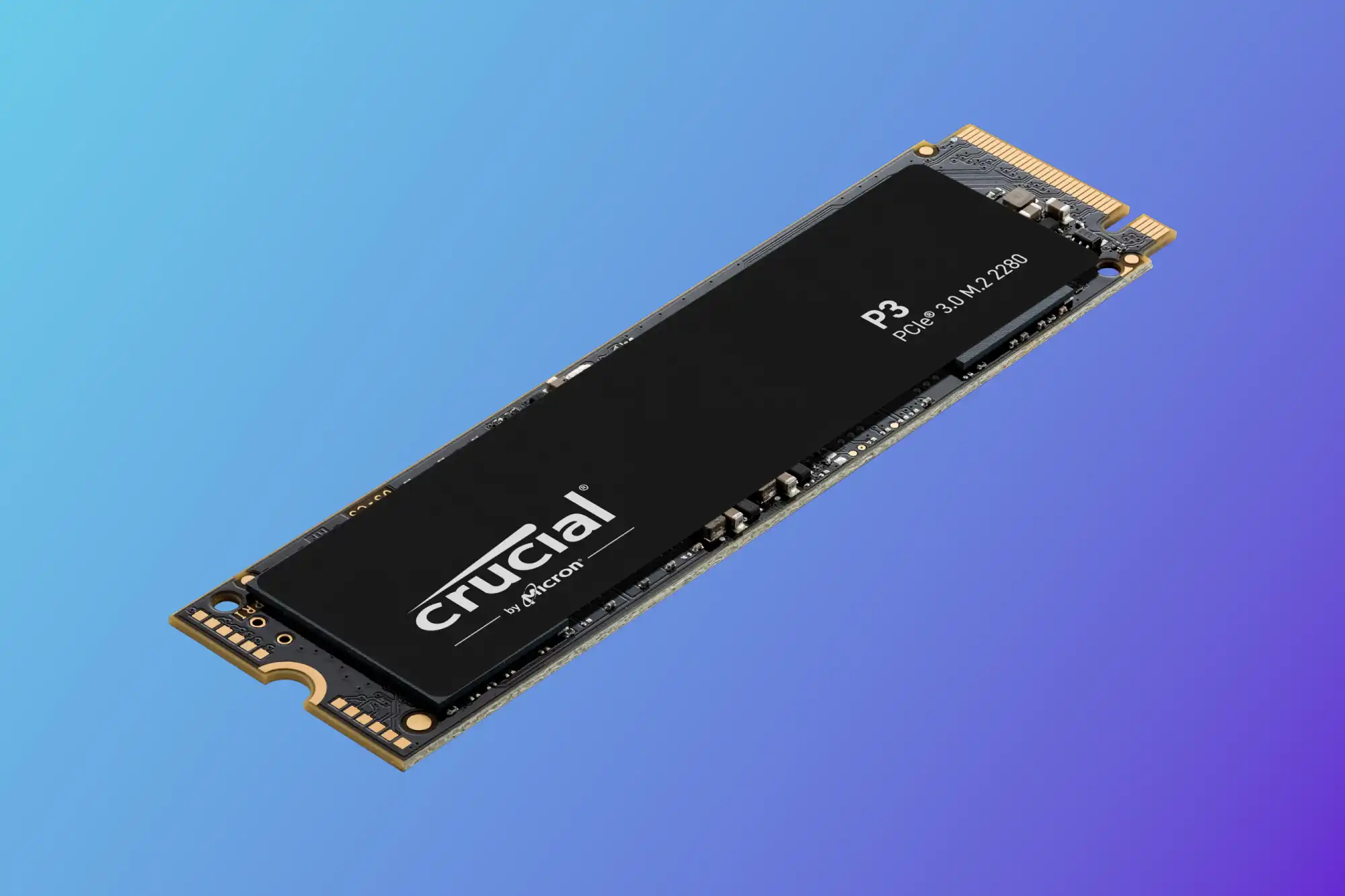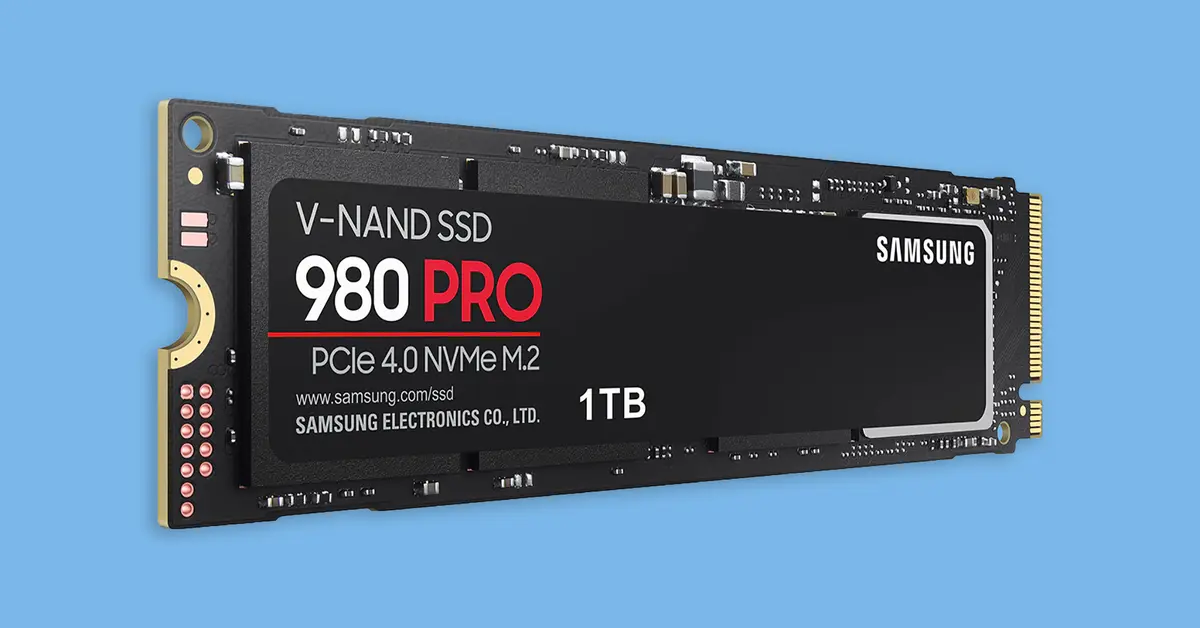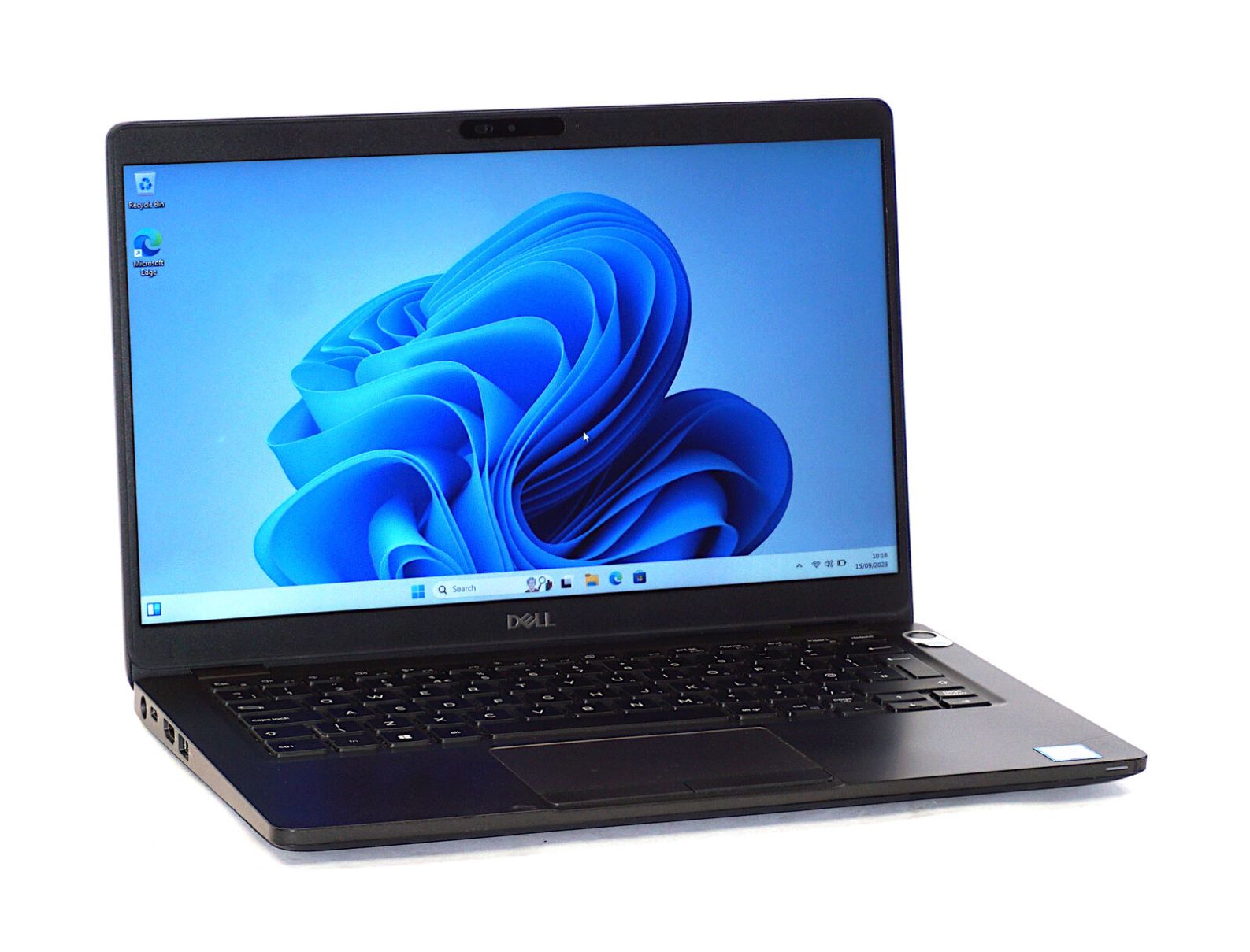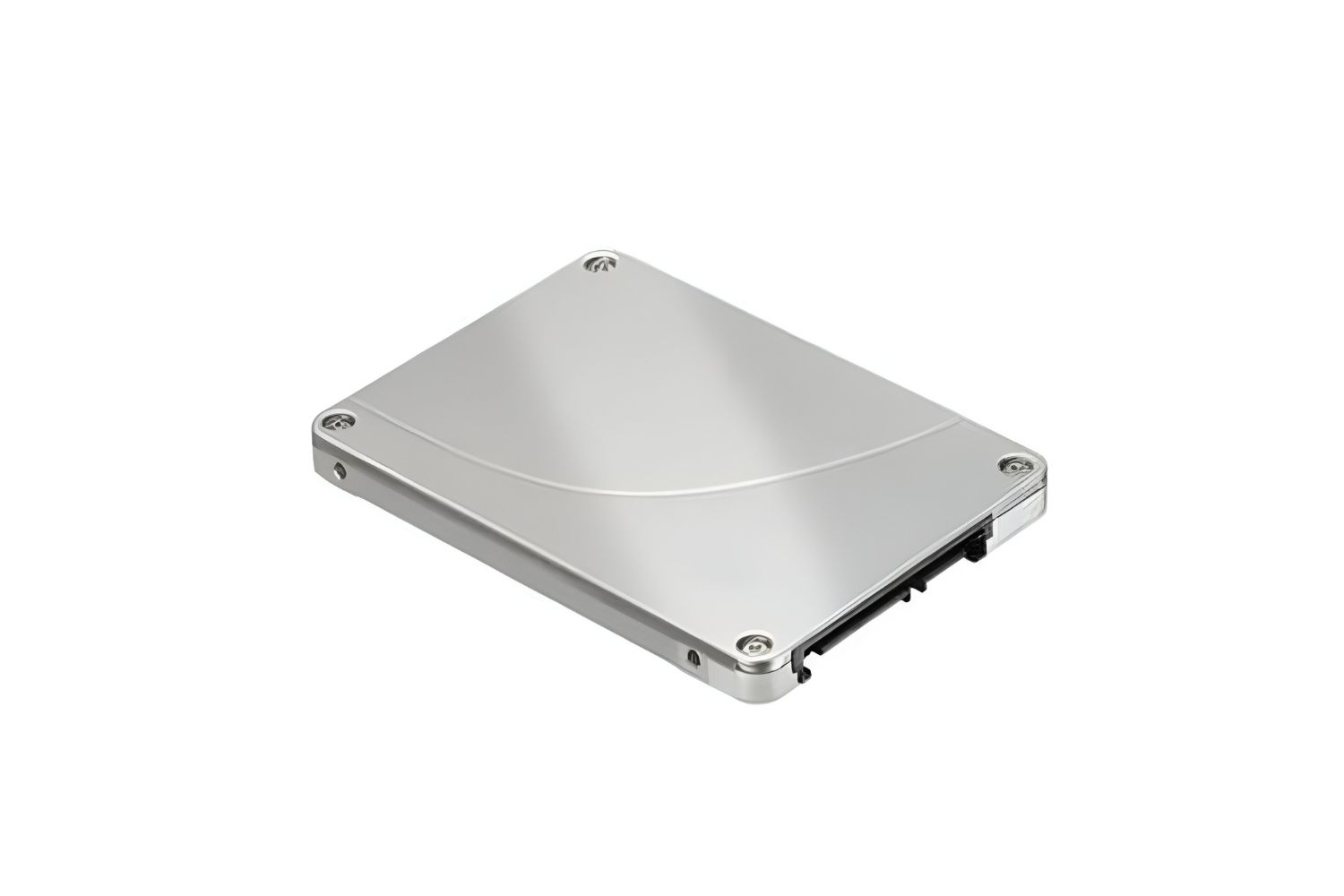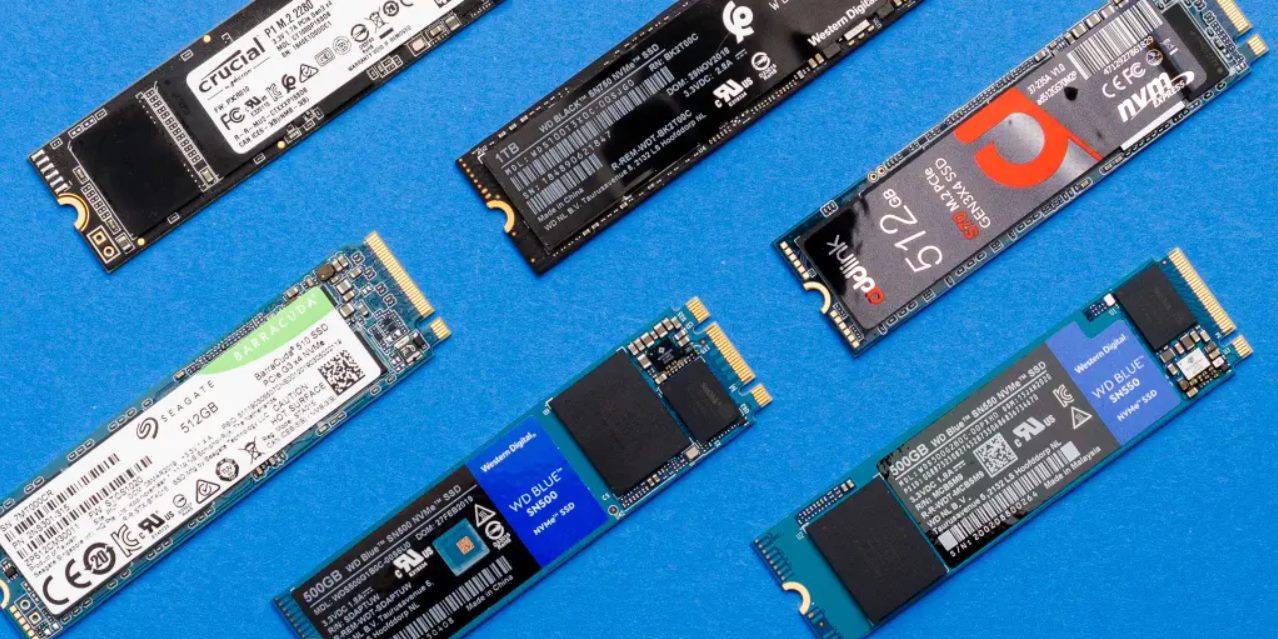Introduction
Welcome to the world of Solid-State Drives (SSDs), where speed and performance reign supreme. As technology advances, more and more people are turning to SSDs as their primary storage solution. But how long can you expect an SSD to last?
In this article, we will delve into the topic of SSD lifespan. We will explore the factors that can affect the longevity of an SSD and provide valuable insights on how to extend its life. By understanding how SSDs work and what can impact their lifespan, you can make informed decisions when it comes to optimizing the durability and performance of your storage device.
SSDs are rapidly replacing traditional Hard Disk Drives (HDDs) due to their significant advantages, including faster data transfer speeds, reduced power consumption, and increased durability. Rather than relying on spinning disks and mechanical components, SSDs utilize NAND flash memory chips to store and retrieve data. This flash memory technology allows for lightning-fast read and write operations, making SSDs an ideal choice for anyone seeking improved system responsiveness.
However, unlike HDDs, SSDs have a limited number of write cycles before they wear out. This write endurance, or program/erase (P/E) cycles, refers to the number of times you can write, erase, and rewrite data on an SSD before it starts to degrade. Understanding the factors that affect write endurance and implementing best practices to mitigate their impact is essential in maximizing the lifespan of your SSD.
Throughout this article, we will discuss various factors including NAND flash technology, write endurance, overprovisioning, TRIM support, temperature and environmental factors, power faults and outages, sudden power interruptions, data retention, and the wearing out of electronic components. By gaining a comprehensive understanding of these factors, you will be equipped with the knowledge needed to make informed decisions about your SSD usage.
So, let’s dive deep into the world of SSDs and discover the secrets to prolonging their lifespan and ensuring optimal performance for years to come.
What is an SSD?
An SSD, or Solid-State Drive, is a type of storage device that uses NAND flash memory to store and retrieve data. Unlike traditional Hard Disk Drives (HDDs), which rely on spinning disks and mechanical components, SSDs have no moving parts. This makes them faster, more durable, and less susceptible to mechanical failures.
SSDs have revolutionized the computing industry, offering several significant advantages over HDDs. One of the biggest advantages is speed. SSDs can read and write data at incredibly high speeds, resulting in faster boot times and improved overall system performance. This is especially noticeable when it comes to tasks like loading applications or transferring large files.
In addition to speed, SSDs also offer increased durability. Since they don’t have any moving parts, there’s less risk of mechanical breakdowns or damage from accidental drops or shocks. This makes SSDs ideal for portable devices like laptops, where reliability and durability are essential.
Another advantage of SSDs is their energy efficiency. Because they don’t have spinning disks that require power to operate, SSDs consume less energy compared to HDDs. This can result in longer battery life for laptops and lower electricity bills for desktop users.
Furthermore, SSDs produce less heat than HDDs since they generate minimal friction. This not only contributes to better overall performance but also helps to extend the lifespan of the storage device.
While SSDs offer numerous benefits, they do have some limitations. One of the main drawbacks is their higher cost per gigabyte compared to HDDs. This means that SSDs generally provide less storage capacity for the same price as an HDD. However, as technology progresses, the cost of SSDs continues to decrease, making them more affordable for the average consumer.
Overall, SSDs have become the storage solution of choice for many individuals and businesses due to their speed, durability, energy efficiency, and compact form factor. Whether you’re a gamer, video editor, or simply a casual computer user, upgrading to an SSD can significantly enhance your computing experience.
How Does an SSD Work?
Understanding how an SSD works is essential to comprehend its superior performance and extended lifespan compared to traditional Hard Disk Drives (HDDs).
At the core of an SSD is NAND flash memory, a non-volatile type of memory that retains data even when the power is turned off. NAND flash memory consists of cells that store data in the form of electrical charges. These cells are organized into pages, with each page capable of storing a certain amount of data.
Writing data to an SSD involves two primary operations: erasing and programming. To write new data, the SSD must first erase the existing data stored in the cells. This process is known as the erase operation. Once the cells are erased, the SSD can then program the new data by applying electrical charges to the cells.
Unlike HDDs that write and read data sequentially on spinning disks, SSDs can access data randomly. This means that data can be retrieved from any location on the SSD without the need for mechanical components to physically move. This random access nature allows SSDs to read and write data at incredibly high speeds, resulting in faster overall performance.
One crucial feature of SSDs is the wear-leveling algorithm. Since each cell in the NAND flash memory has a limited number of write cycles, it’s essential to distribute the writes evenly across all cells. The wear-leveling algorithm ensures that data is written to different cells over time, preventing certain cells from wearing out faster than others. This helps to maximize the lifespan of the SSD and maintain consistent performance throughout its usage.
To manage the data stored on the SSD, a controller chip is responsible for organizing, storing, and retrieving data. The controller chip communicates with the computer’s operating system and facilitates the necessary operations for reading and writing data. It also handles error correction, garbage collection (removing data marked for deletion), and other maintenance tasks to ensure data integrity and overall system performance.
Overall, the combination of NAND flash memory, a wear-leveling algorithm, and a sophisticated controller chip allows SSDs to deliver exceptional performance and durability. By eliminating the need for physical moving parts, SSDs offer faster data access, increased reliability, and enhanced energy efficiency.
Factors That Affect the Lifespan of an SSD
While Solid-State Drives (SSDs) offer many advantages over traditional Hard Disk Drives (HDDs), they are not immune to wear and degradation over time. Several factors can influence the lifespan of an SSD, and understanding these factors is crucial in optimizing its durability and performance.
One of the primary factors that affect an SSD’s lifespan is the type of NAND flash technology used. There are different types of NAND flash, including Single-Level Cell (SLC), Multi-Level Cell (MLC), and Triple-Level Cell (TLC). SLC, with one bit per cell, offers the highest endurance, followed by MLC and TLC, which store multiple bits per cell. The more bits stored per cell, the lower the endurance and lifespan of the SSD.
Write endurance is another critical factor that determines how long an SSD will last. Write endurance refers to the number of program/erase (P/E) cycles an SSD can endure before it starts to degrade. Each SSD model has a specific write endurance rating, usually expressed in terabytes written (TBW). It’s important to consider the write endurance rating when choosing an SSD, especially if you perform a lot of write-intensive tasks such as video editing or database operations.
Overprovisioning is a technique used in SSDs to improve performance, endurance, and lifespan. Essentially, a portion of the SSD’s capacity is reserved for background activities, such as wear-leveling and garbage collection. By providing extra space for these operations, the workload is spread out more evenly, reducing write amplification and increasing the lifespan of the SSD.
TRIM support is another crucial factor in maintaining SSD performance and longevity. TRIM allows the operating system to inform the SSD which blocks of data are no longer in use. This enables the SSD to mark these blocks as free, allowing for faster write operations. Without TRIM support, the SSD’s performance could suffer over time, leading to degradation and a reduced lifespan.
Temperature and environmental factors can significantly impact the lifespan of an SSD. Excessive heat can cause the SSD to degrade faster, leading to potential data loss. It’s important to ensure proper ventilation and cooling for your SSD, especially in high-temperature environments. Additionally, physical shocks and vibrations can also affect the SSD’s longevity, so it’s advisable to handle and store your SSD with care.
Power faults and outages are another factor that can impact the lifespan of an SSD. Sudden power losses or improper shut down during write operations can result in data corruption or loss. It’s crucial to ensure stable power supply and use a backup power source, such as an Uninterruptible Power Supply (UPS), to protect your SSD from potential damage.
Sudden power interruptions during write operations can also cause data corruption and decrease the lifespan of an SSD. Using a reliable power source and a UPS can help prevent such issues. Furthermore, the wearing out of electronic components, such as the controller chip, can occur over time and may affect the SSD’s overall performance and lifespan.
By understanding these factors and implementing best practices, such as choosing an SSD with suitable NAND flash technology, considering write endurance ratings, enabling TRIM support, maintaining proper temperature and environmental conditions, and protecting against power faults, you can extend the lifespan of your SSD and ensure optimal performance for years to come.
NAND Flash Technology
NAND flash technology is a critical component of Solid-State Drives (SSDs) and plays a significant role in determining the lifespan and performance of these storage devices. Understanding the different types of NAND flash technology is essential in making informed decisions when choosing an SSD.
There are several types of NAND flash technology, including Single-Level Cell (SLC), Multi-Level Cell (MLC), Triple-Level Cell (TLC), and Quad-Level Cell (QLC).
SLC NAND flash is the most durable and reliable option available. It stores one bit of data per cell and provides the highest endurance compared to other types. This means it can withstand a significantly greater number of program/erase (P/E) cycles before wearing out. SLC-based SSDs excel in performance, reliability, and longevity, but they are also more expensive and offer lower storage capacities.
MLC NAND flash, on the other hand, stores two bits of data per cell. It offers a balance between performance, endurance, and cost-effectiveness. MLC-based SSDs are less expensive compared to SLC but can withstand fewer P/E cycles. Despite this, MLC SSDs still offer excellent performance and are widely used in consumer and enterprise-level applications.
TLC NAND flash is the most common type found in consumer-grade SSDs today. It stores three bits of data per cell, making it more cost-effective and providing higher storage capacities compared to SLC and MLC. However, TLC-based SSDs have lower endurance and a shorter lifespan due to the higher number of P/E cycles required. While they may not be suitable for heavy write-intensive workloads, TLC SSDs still offer impressive performance and are an affordable option for everyday computing needs.
QLC NAND flash is the latest addition to the market, offering even higher storage capacities and lower cost per gigabyte. QLC stores four bits of data per cell, making it the most cost-effective option. However, QLC-based SSDs have lower endurance and a shorter lifespan compared to other types of NAND flash. They are primarily suited for read-intensive applications and tasks that do not involve frequent and extensive write operations.
It’s important to note that as the technology advances, manufacturers continually improve the endurance and longevity of NAND flash across all types. While SLC remains the most durable, modern MLC, TLC, and QLC SSDs have significantly increased their endurance, making them suitable for a wide range of applications.
When selecting an SSD, consider the type of NAND flash technology based on your specific needs and budget. If you require maximum durability and performance, SLC or MLC SSDs could be the preferred choice. For everyday consumer use or cost-conscious applications, TLC or QLC SSDs offer compelling options with ample storage capacities.
By understanding the different types of NAND flash technology and their characteristics, you can make an informed decision and choose an SSD that meets your requirements for both performance and endurance.
Write Endurance
Write endurance is a critical factor when considering the lifespan of a Solid-State Drive (SSD). It refers to the number of program/erase (P/E) cycles an SSD can endure before it starts to degrade. Every time data is written, erased, and rewritten on an SSD, it consumes a small portion of its write endurance.
SSD manufacturers specify the write endurance of their drives in a metric called Terabytes Written (TBW). This metric represents the total amount of data that can be written to the SSD over its entire lifespan. For example, an SSD with a TBW rating of 500TB can handle 500 terabytes of data written to it before its write endurance is exhausted.
The write endurance of an SSD is primarily determined by the type of NAND flash technology used. Single-Level Cell (SLC) NAND flash offers the highest endurance, as it stores only one bit of data per cell. SLC-based SSDs can endure significantly more write cycles compared to Multi-Level Cell (MLC), Triple-Level Cell (TLC), or Quad-Level Cell (QLC) SSDs.
MLC SSDs can endure fewer write cycles compared to SLC, as they store two bits of data per cell. However, advancements in MLC technology have significantly increased the endurance of MLC-based SSDs compared to earlier generations. TLC and QLC SSDs, which store three and four bits per cell respectively, have even lower write endurance due to the higher number of P/E cycles required.
While write endurance is an important consideration, it’s essential to understand that for typical consumer usage, the TBW rating of modern SSDs is more than sufficient for everyday tasks. In fact, for most users, the drive’s lifespan will likely exceed the time they use it.
It’s worth noting that various factors, such as the wear-leveling algorithm implemented in the SSD’s controller, can help mitigate write endurance issues. The wear-leveling algorithm ensures that write operations are distributed evenly across the SSD’s memory cells. This helps to prevent specific cells from wearing out faster than others and extends the overall lifespan of the drive.
It’s important to note that the write endurance of an SSD should not be a source of excessive concern for most users. The majority of consumer SSDs on the market today offer ample write endurance for regular use cases. However, for those who have specific workload requirements with extensive write operations, such as in high-end workstations or databases, it may be beneficial to select SSDs with higher write endurance or explore enterprise-grade options.
To ensure the optimal lifespan and performance of your SSD, it’s always advisable to follow best practices such as keeping your drive firmware up to date, performing regular backups, enabling TRIM support, and avoiding unnecessary write operations whenever possible.
By understanding the write endurance limitations of SSDs and implementing good data management practices, you can maximize the lifespan of your SSD and enjoy its high-performance benefits for years to come.
Overprovisioning
Overprovisioning is a technique used in Solid-State Drives (SSDs) to enhance performance, endurance, and overall lifespan. It involves allocating a portion of the SSD’s capacity for internal use, rather than making it available for user data storage. This reserved space is used for various background activities, including wear-leveling and garbage collection.
The main purpose of overprovisioning is to ensure that the SSD’s internal operations have sufficient space to perform optimally. By reserving a certain percentage of the total capacity, the workload is spread out more evenly across the SSD’s memory cells.
One of the key benefits of overprovisioning is improved wear-leveling. Wear-leveling is a process by which data is evenly distributed across the SSD to prevent specific cells from wearing out faster than others. By having additional reserved space, the SSD can distribute write operations more efficiently, reducing the risk of certain cells reaching their write endurance limits prematurely.
Garbage collection is another background operation that benefits from overprovisioning. Garbage collection involves reclaiming blocks of data that are marked for deletion. The reserved space allows the SSD to temporarily store and manage these blocks without impacting performance during active use. This improves the efficiency of write operations and helps maintain consistent performance over time.
Overprovisioning can also reduce write amplification. Write amplification is a phenomenon where the actual amount of data written to the SSD is greater than the user’s intended data due to internal operations. With overprovisioning, there is more free space available within the reserved portion, reducing the need for frequent and extensive write operations. This results in a lower write amplification factor, which ultimately contributes to improved endurance and increased lifespan of the SSD.
Typically, the amount of overprovisioning varies depending on the SSD model and manufacturer. It is common to find SSDs with 7-10% overprovisioning. However, enterprise-grade SSDs may have higher levels of overprovisioning, sometimes up to 20% or more. The specific level of overprovisioning required depends on factors such as the type of NAND flash technology used and the intended use case for the SSD.
It’s worth noting that users do not have direct control over the amount of overprovisioning in consumer-grade SSDs. The reserved space is pre-determined by the manufacturer during the SSD’s design and cannot be adjusted by the end-user.
While overprovisioning provides numerous benefits, it does come at the expense of reduced available capacity. For example, if you purchase a 1TB SSD with 10% overprovisioning, the usable storage capacity will be around 900GB. It’s important to consider this trade-off when selecting an SSD, ensuring that you choose a capacity that meets your storage needs while still benefiting from the advantages of overprovisioning.
Overall, overprovisioning is an important feature in SSDs that contributes to improved performance, endurance, and longevity. By providing additional space for wear-leveling, garbage collection, and reducing write amplification, overprovisioning plays a crucial role in maintaining the optimal functioning of an SSD throughout its lifespan.
TRIM Support
TRIM is a crucial feature in Solid-State Drives (SSDs) that helps maintain their performance and prolong their lifespan. It is an essential command that allows the operating system to inform the SSD which blocks of data are no longer in use. Enabling TRIM support ensures efficient and effective management of the SSD’s storage space.
When files are deleted or modified on an SSD, the operating system marks those blocks as available for reuse. However, without TRIM support, the SSD may not be aware that these blocks are no longer in use. This can lead to a phenomenon known as write amplification, where the SSD unnecessarily writes and rewrites data on blocks that contain deleted or modified files.
By enabling TRIM support, the operating system communicates to the SSD which data blocks are no longer needed. In response, the SSD actively marks these blocks as available for immediate use. This process improves the SSD’s efficiency and performance as it avoids unnecessary write operations on blocks that do not contain valid data.
The benefits of TRIM support are twofold. Firstly, it ensures that the SSD’s storage space is efficiently managed, preventing write amplification and reducing the wear on the NAND flash memory cells. This leads to improved endurance and extends the overall lifespan of the SSD.
Secondly, TRIM support allows the SSD to maintain consistent performance over time. Without TRIM, the SSD may experience performance degradation as more and more blocks become invalid but are not marked as available. This can result in slower read and write speeds and reduced responsiveness. With TRIM support, the SSD can efficiently allocate memory resources, ensuring that only valid data is stored and actively used. This helps to maintain optimal performance and responsiveness.
While most modern operating systems support TRIM, it’s important to ensure that TRIM is enabled and functioning correctly. Some SSDs may have firmware or driver updates that are required to enable TRIM support, so it’s advisable to check for and install any available updates for your specific SSD model.
It’s worth noting that TRIM support is more effective on SSDs that have adequate overprovisioning. Overprovisioning, as discussed earlier, provides additional space for the SSD’s background operations, including garbage collection and wear-leveling. Overprovisioned SSDs can more efficiently utilize TRIM commands, resulting in better overall performance and longevity.
Enabling TRIM support is generally a straightforward process. On most operating systems, TRIM is enabled by default when using modern SSDs. However, it’s always recommended to verify that TRIM is enabled, particularly after installing or upgrading an SSD. Checking the SSD’s user manual or the manufacturer’s website for instructions specific to your SSD model can provide guidance on how to enable and verify TRIM support.
Overall, TRIM support is a vital feature for SSDs that enhances performance, improves endurance, and prolongs the lifespan of these storage devices. By enabling TRIM and ensuring it is fully functioning, you can optimize the performance and longevity of your SSD for long-term satisfaction.
Temperature and Environmental Factors
Temperature and environmental conditions play a significant role in the lifespan and performance of Solid-State Drives (SSDs). It is crucial to understand how temperature and various environmental factors can impact the durability and reliability of your SSD.
High temperatures can be particularly detrimental to SSDs. When exposed to excessive heat, the components of an SSD can degrade faster, leading to potential data loss and reduced lifespan. Overheating can also cause various electronic components to malfunction, affecting the overall performance of the drive.
Proper ventilation and cooling are essential in maintaining an optimal operating temperature for your SSD. Make sure that your computer or device has adequate airflow, especially in situations where the SSD is placed in confined spaces or subjected to intense workloads for extended periods. Avoid blocking airflow vents and consider using additional cooling solutions, such as fans or heat sinks, if necessary.
In addition to temperature, other environmental factors can impact your SSD. Physical shocks or vibrations, such as those that occur during transportation or accidental drops, can cause internal damage to the SSD. It’s important to handle and transport your SSD carefully to prevent any potential harm. Consider using SSD mounting brackets or foam padding to secure the drive and protect it from impacts.
Dust and debris can also accumulate on the SSD’s surface and affect its performance. Regular cleaning of the SSD and its surroundings using compressed air or lint-free cloths can help prevent dust build-up and ensure optimal airflow. Avoid using abrasive materials or liquid cleaners as they can damage the drive.
Humidity is another factor to be mindful of. High levels of humidity can lead to condensation, which can cause electrical shorts and damage the SSD’s circuitry. It’s advisable to store and operate your SSD in environments with relative humidity levels within the manufacturer’s specified ranges. If necessary, use dehumidifiers or other humidity control measures when storing or using your SSD in humid conditions.
Extreme temperature fluctuations should also be avoided. Rapid changes in temperature can cause expansion and contraction of SSD components, potentially leading to connection issues or other forms of damage. Ideally, SSDs should operate within a stable temperature range to ensure optimal performance and reliability.
It’s important to note that different SSD models may have specific temperature and environmental operating ranges specified by the manufacturer. These recommendations should be followed to maximize the lifespan and performance of your SSD. Always consult the user manual or the manufacturer’s website for any guidelines or restrictions regarding temperature and environmental conditions.
By maintaining proper temperature control, reducing exposure to physical shock and vibration, preventing dust build-up, and managing humidity levels, you can help ensure the longevity and performance of your SSD. Taking these precautions will contribute to a stable and reliable computing experience while safeguarding your valuable data.
Power Faults and Outages
Power faults and outages can significantly impact the performance, reliability, and lifespan of Solid-State Drives (SSDs). It is important to understand how sudden power interruptions or power-related issues can affect SSDs and implement measures to protect against them.
When a power fault occurs, such as a sudden power outage or an abrupt shutdown, the SSD may be in the middle of a read or write operation. Without sufficient power, the SSD may not have enough time to complete the operation or properly save its internal state. This can result in data corruption or loss, potentially affecting the integrity of stored files and the overall functionality of the drive.
One of the ways to mitigate the risks associated with power faults is to use an Uninterruptible Power Supply (UPS). A UPS provides battery backup power to your computer or device, allowing it to continue operating for a short period during a power outage. This gives the system enough time to shut down properly or switch to an alternate power source without abrupt interruptions. Using a UPS can protect your SSD from data corruption and prevent potential damage due to sudden power loss.
In addition to a UPS, it’s important to ensure that your computer and SSD are connected to a stable power source. Unstable voltages or power fluctuations can cause damage to electronic components, including the SSD. Surge protectors and voltage stabilizers can help regulate the electrical supply and protect against sudden surges or fluctuations, safeguarding your SSD from potential harm.
Regularly backing up your data is another essential practice to protect against the risks associated with power faults. In the event of data corruption or loss due to a power issue, having up-to-date backups ensures that you can recover your important files and minimize the potential impact of such incidents.
Software-based protection mechanisms, such as journaling file systems, can also provide some level of resilience against power faults. These file systems maintain a log or journal of changes made to the file system structure. In the event of an abrupt power loss, the journal can be used to recover the file system to a consistent state, reducing the risk of data corruption.
However, it’s important to note that such protective measures can help minimize the risks, but they do not eliminate the possibility of data loss or damage entirely. Therefore, it’s always recommended to follow best practices and preventive measures to safeguard your SSD against power faults and outages.
Overall, power faults and outages can pose significant risks to the performance and durability of SSDs. By using a UPS, maintaining a stable power supply, regularly backing up data, and implementing software-based protections, you can minimize the impact of power-related issues and ensure the longevity and reliability of your SSD.
Sudden Power Interruptions
Sudden power interruptions can have a detrimental impact on the performance, data integrity, and overall lifespan of Solid-State Drives (SSDs). Understanding the potential risks associated with sudden power loss and implementing appropriate precautions can help mitigate these risks and protect your SSD.
When a sudden power interruption occurs, the SSD may be in the middle of a read or write operation. Without adequate power supply, the SSD may not have sufficient time to complete the operation or properly save its internal state. This can potentially lead to data corruption or loss, jeopardizing the integrity of stored files and the overall functionality of the drive.
To minimize the risks associated with sudden power interruptions, it is recommended to use an Uninterruptible Power Supply (UPS). A UPS provides battery backup power to your computer or device, allowing it to continue operating for a short period during a power outage. This gives the system enough time to shut down properly or switch to an alternate power source without abrupt interruptions. Using a UPS helps protect your SSD from data corruption and prevents potential damage caused by sudden power loss.
In addition to a UPS, enabling power loss protection features, if available, can provide an extra layer of safeguarding. Some SSDs come equipped with power loss protection mechanisms that include supercapacitors or backup batteries. These components provide temporary power to the SSD in case of sudden power loss, giving it enough time to complete ongoing write operations and ensure data is safely stored.
Another important precaution is to regularly save your work and frequently create backups. By saving your progress and creating backups at regular intervals, you reduce the risk of losing valuable data in the event of a sudden power interruption. Saving your work frequently ensures that even if the power is lost, you have the most recently saved version of your files ready for recovery.
It is also wise to enable and utilize journaling file systems. Journaling file systems maintain a log, or journal, of changes made to the file system structure. In the event of an abrupt power loss, the journal can be used to recover the file system to a consistent state, minimizing the potential for data corruption or loss. Journaling file systems provide an added layer of protection, especially during sudden power interruptions.
It’s important to note that while precautions can help mitigate risks, sudden power interruptions can still potentially result in data loss or damage. Therefore, it’s essential to follow preventive measures and safe computing practices, such as using a UPS, creating backups, and enabling power loss protection features, to minimize the impact of abrupt power loss on your SSD.
By taking these precautions and being vigilant about power interruptions, you can better protect your SSD, ensure data integrity, and prolong the lifespan of your storage device.
Data Retention
Data retention is an important aspect to consider when it comes to Solid-State Drives (SSDs). While SSDs offer numerous advantages, it’s crucial to understand how they handle data retention over time and what measures can be taken to ensure the integrity and longevity of stored data.
SSDs use NAND flash memory to store data, which is a type of non-volatile memory. Non-volatile memory retains stored data even when the power is turned off. However, it’s important to note that flash memory can experience a phenomenon called “data retention decay” over time.
Data retention decay refers to the gradual loss of stored data in the individual memory cells of an SSD. This decay occurs due to factors such as electron leakage and charge loss within the cells over extended periods of time.
The extent of data retention decay depends on various factors, including the type of NAND flash technology used, temperature, and the overall health of the SSD. SSDs with higher-quality NAND flash and appropriate storage conditions typically exhibit better data retention capabilities.
Modern SSDs incorporate built-in error correction mechanisms and wear-leveling algorithms, which help maintain data integrity and distribute write operations evenly across the memory cells. These features contribute to minimizing the impact of data retention decay.
In addition to the inherent capabilities of SSDs, there are preventive measures that can be taken to ensure optimal data retention. Regular backups are crucial in mitigating the risks associated with data retention decay. By regularly backing up your important files, you can protect against potential data loss and ensure that you have a secondary copy of your data available.
Another important practice is to periodically refresh stored data on your SSD. Data refreshing involves reading the stored data and writing it back to the SSD, effectively refreshing the charge and reducing the likelihood of data loss. Some SSD management tools or software may offer features to automate the data refreshing process.
Controlling the temperature and storage environment of your SSD can also contribute to data retention. Excessive heat can accelerate the decay of stored data, so it’s important to ensure proper ventilation and cooling to prevent overheating. Additionally, storing your SSD in a temperature-controlled and well-ventilated environment can help maintain optimal data retention characteristics.
It’s important to note that while data retention decay is a consideration, modern SSDs have built-in mechanisms and technologies to mitigate the risks and maintain data integrity. With regular backups, data refreshing, and proper storage conditions, you can ensure the long-term viability and security of your stored data.
When handling sensitive or critical data, it is advisable to follow industry best practices and consult data storage experts to ensure robust data retention strategies are in place. Regular monitoring and proactive maintenance can help detect any signs of degradation or potential data loss, allowing for early intervention and remediation if necessary.
By understanding the factors that affect data retention and implementing appropriate measures, you can effectively preserve your data and have peace of mind knowing that your stored information remains secure and accessible over extended periods of time.
Wearing Out of Electronic Components
The wearing out of electronic components is an important consideration when it comes to the lifespan and performance of Solid-State Drives (SSDs). While SSDs are known for their durability and reliability, prolonged usage can still result in the gradual degradation of certain electronic components.
One of the primary components that can wear out over time is the SSD’s controller chip. The controller chip is responsible for managing data transfer between the computer and the NAND flash memory cells. It also handles various functions such as error correction, wear-leveling, and garbage collection. Continuous usage and extensive read/write operations can cause the controller chip to experience gradual wear and potentially affect the overall functionality of the SSD.
Mechanisms such as wear-leveling algorithms are implemented in SSDs to reduce the wear on specific memory cells. These algorithms distribute write operations evenly across the memory cells, preventing any particular cell from wearing out faster than others. However, the controller chip itself is exposed to continuous usage and may experience wear over time.
Factors that can contribute to the wearing out of electronic components, including the controller chip, include the intensity and frequency of usage. SSDs subjected to heavy workloads, such as those used in high-end workstations or servers, may experience faster wear compared to SSDs used in typical consumer devices with lighter workloads.
In addition to workload, other factors such as temperature and environmental conditions can also impact the lifespan of electronic components. High operating temperatures can accelerate the wear and degradation of electronic components, including the SSD’s controller chip. Proper cooling and ventilation of the SSD can help alleviate heat-related stress and improve the overall lifespan of the drive.
While electronic components can wear out over time, it’s important to note that modern SSDs have been designed with durability in mind. Manufacturers employ rigorous testing and quality control to ensure that the SSDs can withstand the demands of typical usage and provide a long lifespan.
It’s worth mentioning that the typical lifespan of an SSD is not solely determined by the wearing out of electronic components. The overall lifespan is influenced by various factors, including the type of NAND flash technology used, write endurance, and overall usage patterns.
To optimize the lifespan of an SSD and mitigate excessive wear on electronic components, it is advisable to follow best practices such as reducing unnecessary write operations, implementing proper cooling and ventilation, and avoiding exposure to extreme temperatures or environmental conditions.
Regular monitoring and health checks can also help identify any signs of component wear or potential issues. Many SSDs come with software utilities or built-in features that allow you to monitor the health and performance of the drive, providing insights into the wear levels of electronic components and allowing for proactive maintenance.
By understanding the potential wearing out of electronic components and implementing appropriate measures to minimize wear, you can extend the overall lifespan and performance of your SSD, ensuring reliable and efficient storage for your data.
Signs of SSD Failure
While Solid-State Drives (SSDs) are renowned for their reliability and durability, like any electronic device, they can eventually fail. Recognizing the signs of SSD failure is important to protect your data and take appropriate action to prevent data loss.
One of the most common signs of SSD failure is frequent and recurring system crashes or freezes. If your computer suddenly becomes unresponsive or experiences frequent crashes, it could indicate an issue with the SSD. These crashes may occur during normal usage, booting, or file access, and can be attributed to a failing SSD.
Another symptom of SSD failure is the inability to boot your computer or access data on the drive. If you encounter errors during the boot process or receive messages indicating that the drive cannot be detected, it could indicate a failing SSD. Similarly, if you experience data corruption or files becoming unreadable or corrupted, it may suggest an issue with the SSD’s integrity.
Unusually slow performance can also be a sign of impending SSD failure. If your computer or applications take an excessively long time to load or respond, despite having adequate system specifications, it could be indicative of a failing SSD.
In some cases, you may hear strange noises coming from your computer, such as clicking, grinding, or whirring sounds. These noises can be attributed to mechanical components, such as fans or hard drives, but may also indicate a failing SSD. If you notice any unusual noises, it is essential to investigate further to identify the source of the problem.
In addition to these physical symptoms, you may also observe specific software-related signs of SSD failure. For example, encountering frequent errors when trying to read or write data to the SSD, experiencing sudden file or folder disappearance, or encountering frequent disk-related errors can point to a failing drive.
It’s important to note that while these signs can indicate an impending SSD failure, they can also be caused by other factors. Issues with the operating system, faulty drivers, or other hardware failures can sometimes produce similar symptoms. Therefore, proper diagnosis by a professional or knowledgeable individual is essential to confirm whether the SSD is indeed the source of the problem.
If you suspect your SSD is failing, it is crucial to immediately back up your data to prevent potential data loss. As soon as you encounter signs of SSD failure, consider contacting the SSD manufacturer or a professional data recovery service for assistance. They can help diagnose the issue and provide guidance on potential solutions or replacement options if necessary.
Regularly monitoring the health and performance of your SSD can also help detect any early warning signs of failure. Many SSDs come with built-in monitoring tools or software utilities that can provide insights into the drive’s overall health and allow for proactive maintenance and troubleshooting.
By recognizing the signs of SSD failure and taking appropriate action, you can minimize the risk of data loss and ensure the long-term reliability and performance of your storage device.
How to Extend the Lifespan of an SSD
While Solid-State Drives (SSDs) are known for their durability, taking proactive measures to extend their lifespan can further optimize their performance and ensure long-term reliability. Here are some effective strategies to help prolong the lifespan of your SSD:
1. Enable overprovisioning: Overprovisioning is the reserved space on an SSD that improves performance, endurance, and overall lifespan. By allocating a portion of the SSD’s capacity for background activities, such as wear-leveling and garbage collection, overprovisioning helps to reduce write amplification and extend the lifespan of the drive.
2. Minimize write operations: Excessive write operations can contribute to the wear and tear of NAND flash memory cells. To minimize unnecessary writes, avoid excessive file transfers, limit temporary file creation, and disable unnecessary background processes that write to the SSD. This can help prolong its lifespan and ensure optimal performance.
3. Enable TRIM support: Enabling TRIM support allows the operating system to inform the SSD which data blocks are no longer in use. This enables the SSD to proactively mark those blocks as available for immediate use, reducing write amplification and maintaining performance over time. Ensure that TRIM is enabled and functioning correctly to optimize the lifespan of your SSD.
4. Maintain stable operating temperatures: High temperatures can degrade the components of an SSD and shorten its lifespan. Ensure proper ventilation and cooling to prevent overheating of the SSD. Avoid exposing the SSD to extreme temperature fluctuations or operating it in excessively high-temperature environments.
5. Regular backups: Regularly backing up your data is critical in case of unexpected failures or accidents. Backing up your files helps to protect against potential data loss and allows for easy restoration in the event of SSD failure or other issues. Store your backups on a separate storage device or in the cloud for added security.
6. Keep firmware up to date: SSD manufacturers often release firmware updates to improve performance and address potential issues. Check for firmware updates periodically and install them as recommended by the manufacturer. Firmware updates often include enhancements to reliability, compatibility, and overall lifespan of the SSD.
7. Update operating system and drivers: Keeping your operating system and device drivers up to date can contribute to the overall stability and compatibility of your system. Updates may include improvements in SSD management and performance, as well as bug fixes that can help extend the lifespan of the SSD.
8. Avoiding sudden power interruptions: Abrupt power outages or power faults can increase the risk of data corruption or loss on an SSD. Protect your SSD by using an Uninterruptible Power Supply (UPS) to provide backup power during outages and implementing surge protectors to shield against power surges or fluctuations.
9. Use appropriate storage and transportation practices: When storing or transporting your SSD, ensure it is stored in an environment with suitable temperature and humidity levels. Protect it from physical shocks, vibrations, and static electricity, as these can potentially damage the drive’s components. Use anti-static bags or protective cases when necessary.
Overall, by following these practices, you can extend the lifespan of your SSD and ensure that it continues to perform optimally over time. Regular maintenance, proper usage, and taking preventative measures can help maximize the lifespan and reliability of your SSD investment.
Conclusion
Solid-State Drives (SSDs) have revolutionized the world of storage with their speed, reliability, and durability. Understanding the factors that can impact the lifespan of an SSD is crucial for maximizing its longevity and performance.
Throughout this article, we have explored various aspects that contribute to the lifespan of an SSD. We discussed the importance of considering factors such as NAND flash technology, write endurance, overprovisioning, TRIM support, temperature and environmental conditions, power faults and outages, sudden power interruptions, data retention, and the wearing out of electronic components.
By selecting an SSD with suitable NAND flash technology, understanding its write endurance rating, enabling TRIM support, and optimizing temperature and environmental conditions, you can significantly enhance the lifespan of your SSD.
Furthermore, implementing preventive measures such as using a UPS, creating regular backups, and updating firmware and drivers can help mitigate the risks associated with power faults, data loss, and compatibility issues.
Proper usage, including minimizing unnecessary write operations, and adopting appropriate storage and transportation practices, also contribute to prolonging the lifespan of your SSD.
Remember that SSDs are not invincible and may eventually experience failure. Recognizing the signs of SSD failure and taking immediate action to safeguard your data can help prevent further damage and potential data loss.
In conclusion, by implementing the strategies discussed in this article, you can extend the lifespan of your SSD, enjoy optimal performance, and ensure the security and integrity of your valuable data. Whether you are a casual computer user or rely on your SSD for business or professional purposes, taking proactive steps to care for your SSD will enable you to maximize its lifespan and productivity, providing you with a reliable storage solution for years to come.







